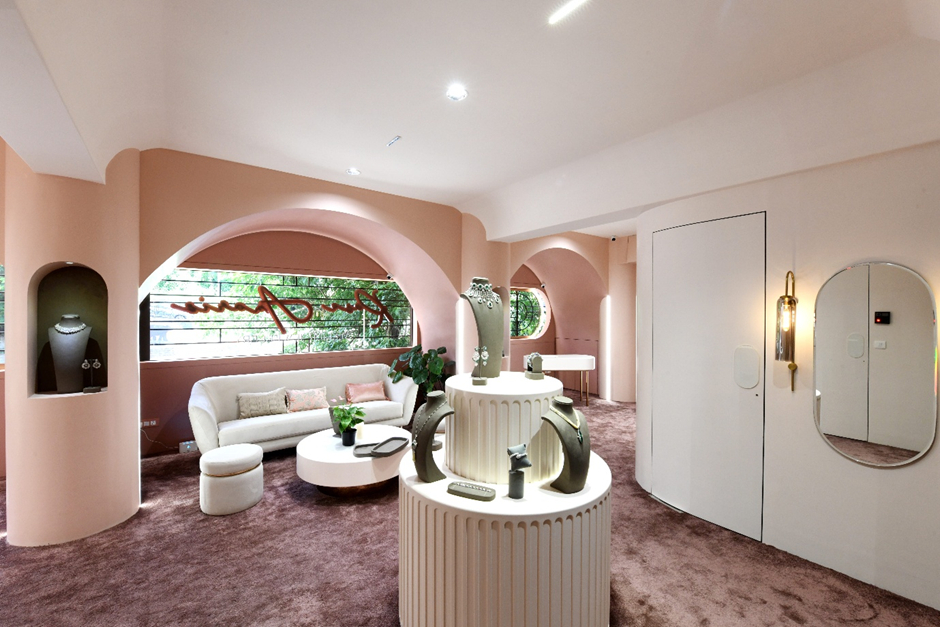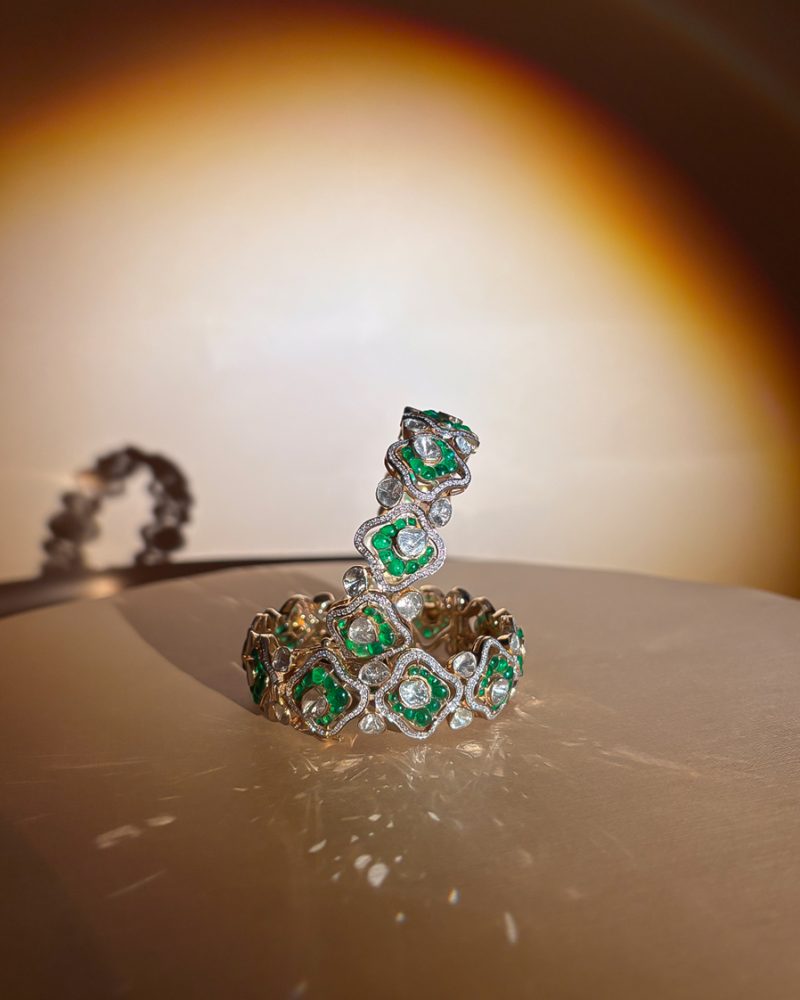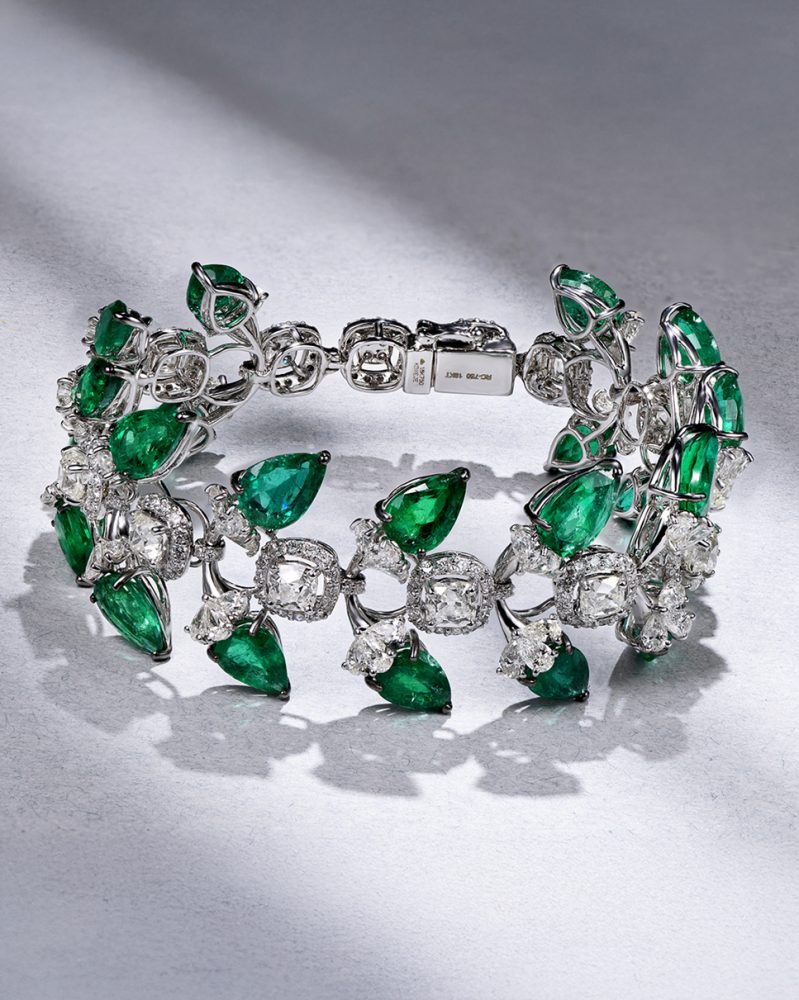A third-generation jeweller, ADEESH NAHAR carries forward a legacy that began in Lucknow with his grandfather’s passion for rare gemstones and heirloom jewels. Under his leadership, the family business has evolved into two distinct identities — Rosentiques, a respected name in high-end, handcrafted polki jewellery catering to the B2B market, and Rosa Amoris, a newer venture founded by him and dedicated to exclusive diamond and coloured gemstone creations for discerning private clients.
In this conversation, Adeesh shares his journey, philosophy of ‘calm luxury,’ and the fine balance between heritage craftsmanship and modern design innovation.

Tell us about yourself and your family. How did it all begin, and how did Rosentiques come into being?
My grandfather started the business back in Lucknow. At that time, he dealt in large single stones and estate jewellery. The family moved to Bombay around 1975–77 and began dealing in jewellery here. However, we entered the retail space only around 1995–96 with Rosentiques. When I joined, we transitioned into a B2B business — around 2008–09, Rosentiques went from being a B2C company to a purely B2B one.
I am a Commerce graduate from HR College, Mumbai, and though I was inclined to do my Master’s, the pull towards the gem and jewellery industry was stronger. That made it almost impossible to do anything else but join the industry.
I completed all gemmological courses at GIA, and then got hands-on training to handle the business. The rest is history.
What led to the creation of Rosa Amoris by you?
Rosa Amoris was conceptualised during covid, though I launched it a couple of years later. It focuses only on high jewellery — important diamond and coloured gemstone pieces, creatively designed, catering exclusively to the B2C segment by appointment only.

What kind of store experience do you offer clients at Rosa Amoris?
The best experience for any high jewellery buyer is privacy. We allow clients their space and time, letting them explore pieces at their own pace.
It usually takes two to three meetings for a client to make a purchase decision. High jewellery purchases often involve family discussions, so multiple appointments are common. But if someone is sure, a single meeting can close the deal, too. Since our creations are high in value, clients usually take time, exercising discretion and thought before arriving at a final decision.
Would you describe your philosophy as ‘slow luxury’?
I’d rather call it calm luxury. Luxury should feel unhurried — clients should have the time to admire and appreciate what they’re investing in. A piece of Rosa Amoris jewellery is like a work of art; and with the use of exceptional gemstones, it also becomes a valuable investment. The brand attracts collectors and connoisseurs who appreciate artistry and exclusivity — even a small ring or earring must carry design depth and distinction.

Do your clients mainly come from India or abroad as well?
Both. We cater to clients all over India and also from the Middle East.
Tell us about your sourcing and design teams.
Our sourcing team is highly experienced — that strength comes from our Rosentiques legacy. We focus on precision and quality in sourcing gemstones. The design team is equally skilled — it’s never about quantity, always about quality.
For Rosa Amoris, we have a head designer leading 5 designers, while Rosentiques has 10.

How do you differentiate between the two brands?
Very clearly — Rosentiques focuses only on high-end polki jewellery for the B2B market. The pieces have a distinct trousseau appeal — refined, structured, and instantly recognisable as Rosentiques creations.
At Rosa Amoris, we have only high diamond- and gem-studded jewellery for the B2C segment.
Where is your jewellery manufactured?
We have our own workshops in Mumbai — one for Rosa Amoris and another for Rosentiques. The setups and teams are completely separate. Rosa Amoris has around 40–45 craftsmen, while Rosentiques employs about 175.

How do you ensure quality control?
Earlier, Rosentiques operated like a traditional family jeweller. Over the years, we have modernised the structure — with proper QC systems, design departments, and SOPs even for polki jewellery. We have clear production standards for setting, linking, and finishing — something not quite common in this category.
Our design DNA is rooted in design strength and evolution. We stay true to timeless craftsmanship while adapting to changing tastes. For us, high-end doesn’t just mean expensive stones — it means high-end finish and design, even in a ₹1 lakh piece.

What defines your expertise in gemstones?
Our forte lies in high-quality gemstones — Basra pearls, rubies, emeralds, and tanzanites — all certified, premium stones by top gem labs like Gübelin Gem Lab, etc.
Is your jewellery fully handcrafted?
It’s a blend. We still rely on handcrafted expertise, but use modern technology — including 3D and CAD — for precision and to optimise gold weight. By using technology, we’ve, over time, reduced gold weight by about 15% without compromising design.
You have been in the business for over 22 years. What is it that still fascinates you and what are the challenges faced in this business.
What fascinates me is the freedom of creativity and the infinite possibilities of using varied gemstones, diverse types of diamonds and several types of cuts in our collections. The more creative and responsible you are with your designs, material, and processes — balanced by financial discipline — the better the industry rewards you. Success is always within reach if you’re determined to achieve it.
The most challenging aspect of this business is financial discipline as it requires an immense amount of money. I think the younger generation should look at a combination of creativity, financial discipline and the urgent aspiration to go ahead. That is the best way for them to move forward.
How has the consumer evolved?
Younger clients prefer lighter, versatile jewellery — elegant but comfortable. They love modular pieces they can layer or wear separately. They’re also blending polki with western wear, which is a major shift.
For weddings, polki dominates — no grand Indian wedding is complete without it. Diamonds are preferred for receptions or post-wedding occasions.
What is your take on the influx of lab-grown diamonds in the market?
Lab-grown diamonds have created their own niche. So, I do not see any competition between LGDs and natural diamonds. Both will co-exist at some point.
Diamonds are diamonds! They are precious and appreciate in value, while LGDs will probably be defined in the category of fun jewellery paired with silver. Let’s see how market trends develop!
Since you handle two different verticals of business with differentiated high-end collections, do you get time to pursue your hobbies and unwind?
My hobbies initially revolved entirely around work, but over time, I’ve come to value spending quality time with my family — my parents, children, and wife — above all else. I enjoy playing pickleball and am very fond of cricket. I also love catching up with friends and family over coffee nights whenever possible. Beyond that, most of my time is devoted to work. Our company operates both a B2B business — Rosentiques, as I said — and a B2C brand, each with very distinct jewellery styles. I oversee the entire production, manufacturing, and purchasing process, which keeps me fully occupied. We’re among the few who follow a highly structured approach, both in team management and in how we engage with the world outside, and that takes up most of my day.

